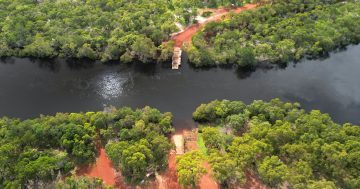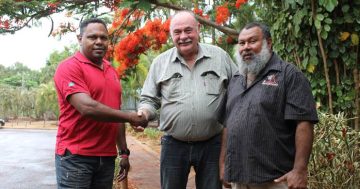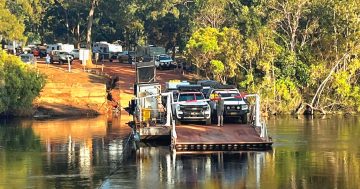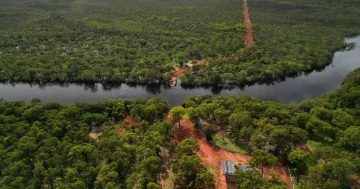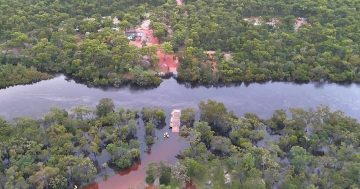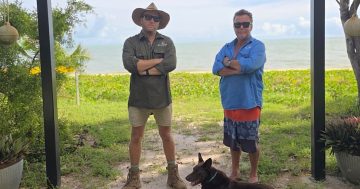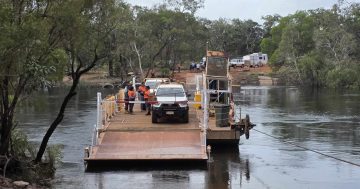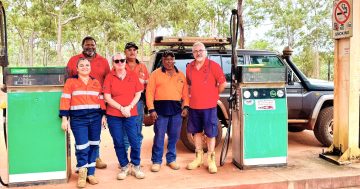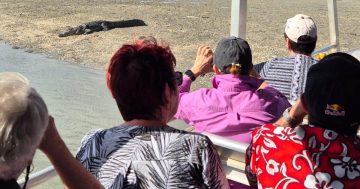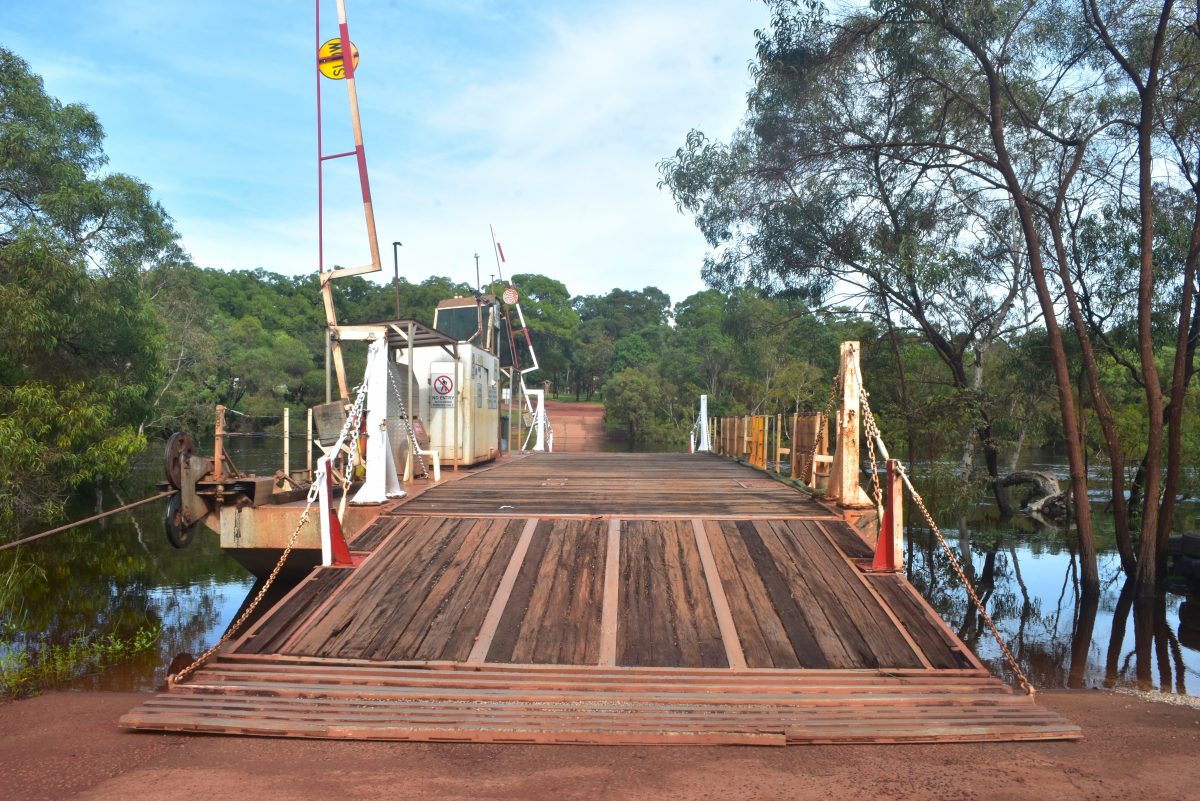
After operating for more than 30 years, it’s fair to say the Jardine River ferry is not ageing well, as evidenced by being taken offline for almost a month’s “major maintenance” by Northern Peninsula Area Regional Council from 3 April, 2024. Photo: Supplied.
They say you can’t put lipstick on a pig, but that’s exactly what operators of the embarrassment of a vessel that links the Northern Peninsula Area (NPA) with the rest of Cape York are trying to do by suggesting it remains the best way to cross the Jardine River.
The ageing ferry will be out of operation for almost all of April as Northern Peninsula Area Regional Council (NPARC) undertakes “major maintenance” to allow it to limp through another bumper tourist season in the northernmost part of Australia.
The maintenance announcement, while unsurprising, has reignited debate about whether the ferry should be scrapped – quite literally, I suspect anyone who’s ever seen it up close would suggest – and a bridge built in its place.
The conversation is now more than a decade old, with stop-start local interest and opposition from Traditional Owners reaching the point Member for Leichhardt Warren Entsch says it’s time to redirect a $10 million Federal Government funding commitment to a community willing to embrace critical infrastructure development.
Should the money, committed in 2015, be reallocated to constructing a wet season solution over Myall Creek, stakeholders in the NPA shouldn’t be surprised when the government isn’t throwing high fives and immediately reaching for the chequebook the next time it’s asked to stump up for an infrastructure project in the region. Governments are funny like that, especially when the region in question consists of just one electorate.
The NPA Traditional Owners have every right to oppose the project, and have cited concerns ranging from environmental to the belief a bridge would lead to undesirables and drugs reaching the remotest part of mainland Queensland.
But the reality is that the biggest – and largely unspoken – opposition to replacing the ferry with a bridge boils down to money, and the loss of income for the council and, by extension, the community it would create.
There’s no question the ferry is an absolute money spinner for NPARC, with an estimated 100,000 tourists now visiting the NPA every year. If we assume most come by road, and that an average three people per vehicle covers solo travellers, grey nomad couples and touring families of five or more, then you’ve got about 30,000 tourist vehicles using the ferry annually. At the current rate of $130-205 per vehicle, that equates to somewhere in the vicinity of $3.9-$6.15 million in revenue for the council each year.
When you look at the NPARC budget, it’s impossible to tell how much it’s raking into its coffers in ferry fees. Even the Member for Leichhardt has questioned what the council does with the money, telling this publication “there’s no transparency on it whatsoever”. A strong bet is that improving the ferry and experience for users isn’t high on the spend list, with the vessel looking like it’s one overloaded four-wheel drive and caravan away from becoming a dive site on the bottom of the river. Indeed, this publication understands the Australian Maritime Safety Authority has already waved more than a few red flags about the ferry’s seaworthiness and the qualifications – or lack thereof – of some of the staff who operate it.
There’s no reason a bridge would automatically equate to a loss of income for the council, nor a loss of jobs. While Warren Entsch and others are vehemently opposed to any sort of toll system, there are precedents across Australia for how it could work effectively. What such a toll setup would look like is the hypothetical of all hypotheticals, given the unwavering Traditional Owner resistance to the idea of a bridge, but it’s almost certain the fee would be less than what the council is currently charging both visitors and locals to traverse the river on something that looks like it’s being held together with duct tape, zip ties and crossed fingers.
It’s time for stakeholders to sit down, find a way to work through the opposition and come up with a bridge plan that allows the NPA to reach its full social and economic potential, not to mention the cost of living improvement a freight alternative to a barge would deliver.
Ongoing trips to the cosmetics counter are going to do little to save the floating porker that is currently the farcical answer to the Jardine River question.
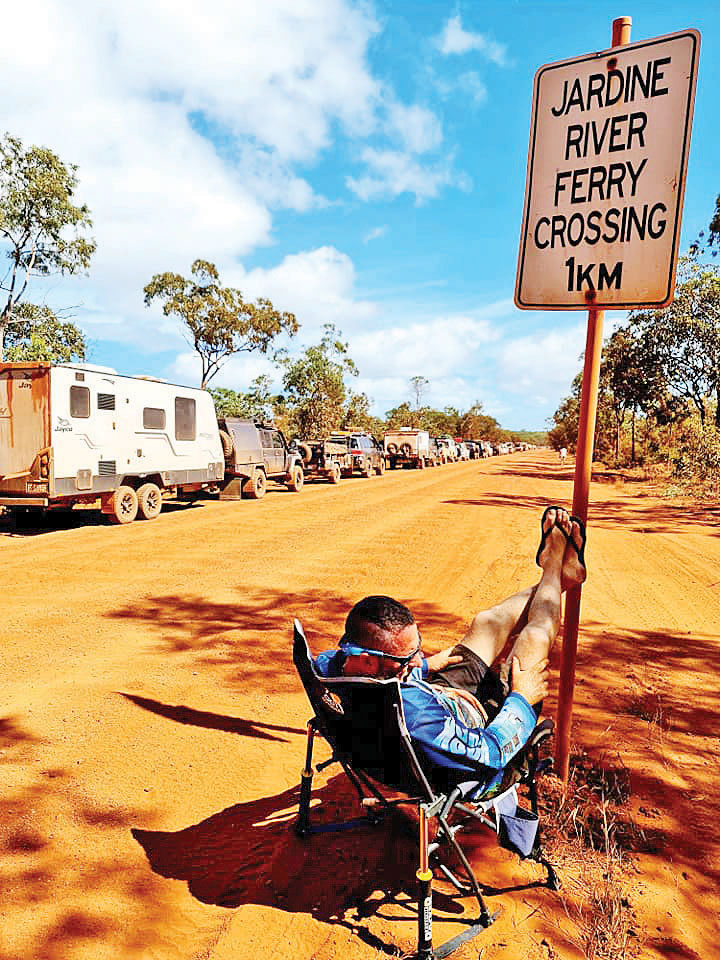
Unfortunately, scenes like this and kilometre-long queues to cross the Jardine River are now an annual occurrence as Traditional Owner objection to the concept of a bridge to replace the dilapidated ferry remains as fervent as ever. Photo: Cape York Weekly.


